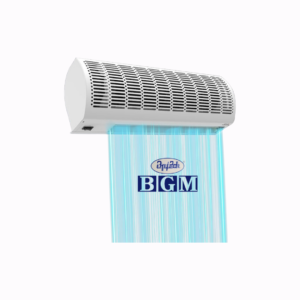
Air Curtains
An air curtain is a device that creates a controlled stream of air across a doorway or entrance. This stream acts as an invisible barrier, separating two different environments without obstructing physical movement.
History of Air Curtains
Invented in the early 20th century, air curtains have evolved from basic air blowers to highly efficient devices used in various industries.
Why Are Air Curtains Important?
Energy Efficiency
By preventing the exchange of indoor and outdoor air, air curtains significantly reduce energy loss in HVAC systems.
Maintaining Hygiene
They prevent dust, dirt, and insects from entering, creating cleaner and safer environments.
How Air Curtains Work
The Science Behind Air Curtains
Air Stream Technology
Air curtains use high-velocity fans to create a uniform stream of air, which forms an effective barrier against external elements.
Types of Air Curtains
Heated Air Curtains
These units are equipped with heating elements to warm the air, making them ideal for cold climates.
Non-Heated Air Curtains
Designed for general use, these are energy-efficient and commonly found in commercial and industrial applications.
Key Features of Air Curtains
High-Speed Fans
The fans generate sufficient airflow to create an effective barrier.
Adjustable Airflow
Air curtains come with adjustable settings to optimize performance based on environmental conditions.
Noise Reduction Technology
Modern air curtains incorporate quiet motors to ensure minimal noise disruption.
Applications of Air Curtains
Commercial and Retail Settings
Air curtains maintain a comfortable shopping experience by keeping the interior temperature consistent.
Industrial Applications
They prevent the loss of conditioned air and protect machinery from dust and contaminants.
Healthcare Facilities
Hospitals use air curtains to maintain sterile conditions and prevent the spread of airborne pathogens.
Hospitality and Food Services
In restaurants and hotels, air curtains ensure hygiene by keeping pests and odors out.






